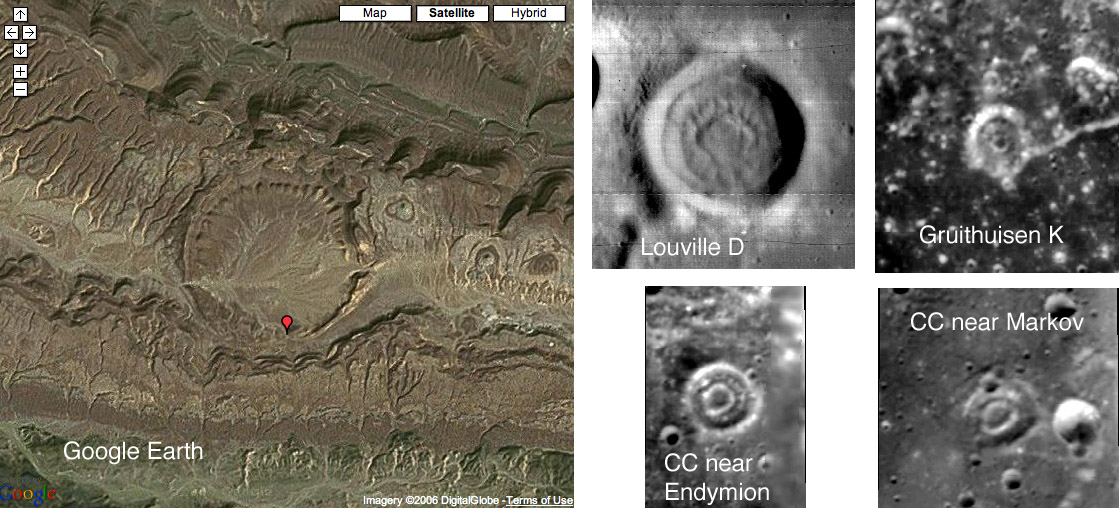
image from Google Earth and Geology.com, and Clementine and Lunar Orbiter IV.
After 45 years of studying the Moon I wish I understand more than I do. Concentric craters are a type of feature that is still a mystery, and now I focus on a peculiar landform that sometimes occurs in CCs and sometimes not, and appears to also occur on Earth. Near Endymion there is a 7 km wide CC with a ring of roundish bumps in the moat between the inner and outer rims. Someone referred to these hills as “ball-bearings” and so I am calling craters with similar features ball-bearing craters. Another CC ball-bearing crater is Gruithuisen K (which is well seen on LO V-184-m, which I can’t find online anywhere), and the CC near Markov may also have ball bearings. But they also occur in craters that are not CC such as Louville D. Pete Schultz in his 1976 Moon Morphology proposed that the bumps in Louville D and Gruithuisen K were volcanic domes. And in the past I have considered that the inner rims of CCs could be volcanic, but there was never compelling evidence. Today, I’ve noticed something similar to ball-bearings in a terrestrial impact crater. Quarkziz is a 3.5 km wide crater in Algeria. Inside about half the rim is an arc of rounded to elongated hills that look remarkably like lunar ball-bearings. There are no volcanic rocks in Quarkziz, they are sedimentary. Unfortunately, there is very little information about the details of the geology of Quarkziz; I don’t know how the bumps occurred. You can see that the rocks on both sides of the crater are layered, which may have something to do with the formation of the bumps. Lunar CC occur near edges of the mare where there is layering of thin lavas over underlying bedrock. Perhaps the recognition of ball-bearing-like features at Quarkziz will lead to new understanding of concentric craters.
Technical Details:
Google Earth uses Application Programming Interfaces (APIs) that allow many kinds of data to be geographically tied to images and maps in Google Earth. The red pinhead on the Quarkziz image is the API-placed pin that pinpoints the crater.
Related Links:
Quarkziz
Yesterday's LPOD: A Lesson in Impactism
Tomorrow's LPOD: To the Moon and Beyond
COMMENTS?
Register, Log in, and join in the comments.



